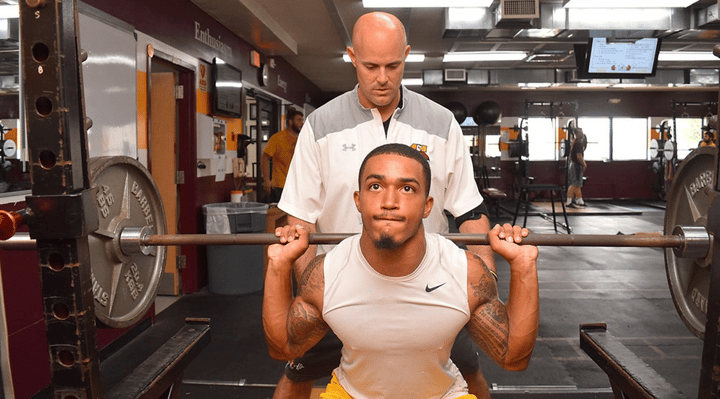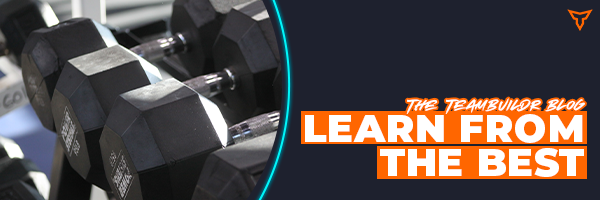The Common Mistake Killing Your Squat Before You Even Squat
Little things matter a lot because they accumulate and turn into big things later down the road. Whoever invented the phrase, “Don’t sweat the small stuff,” is flat out wrong.
Has a rock ever hit your windshield on the highway? It starts off as a tiny crack in the glass, no larger than the size of a dime. You may choose to ignore it because that tiny crack doesn’t impair your vision. After all, it’s in the lower right hand corner of the windshield anyway. You never look there anyway…
3 months later, that dime-sized crack has now expanded. It still doesn’t impair your ability to drive, but it’s about a foot long now. But… you still don’t want to pay $500 to get your windshield fixed though, do you? You justify it as the right decision to ignore it because the crack doesn’t interrupt your driving ability, and it’s just a minor thing.
Winter comes 3 months later. Your car is covered in ice and you have to be at work 5 minutes ago. As you forcefully scrape the ice off your windshield, you notice that the dime-sized crack that grew into a foot-long is now even more massive. Oh wait, it’s not just massive, the windshield is SHATTERED.
Maybe you scraped too hard. Maybe it was the weight of the ice. Maybe it was the weather. No matter what you blame it on, you definitely have to replace the windshield now. And, it will probably be more labor intensive for the mechanic ($$$) than it was when it was just a little dime-sized crack. Now that $500 has turned into $750. You lose.
This is a prime example of a little thing accumulating into a BIG THING that was ultimately avoidable. This is an analogy of how small errors in technique in the weight room can lead to unfavorable outcomes down the line. This is especially true when it comes to the squat.
The Back Squat is a staple exercise in most programs at every level. Personally, we don’t program them much anymore, but we are in the private sector where the coach to athlete ratio is much smaller and we have the ability to customize every detail of a program.
Pretty much every high school and college program is using the Back Squat, though, so we still teach the fundamentals so that athletes can feel comfortable when they go do them with their team.
One of the biggest mistakes I observe when I watch someone squat for the first time is the horrible unracking & walking out of the squat. To be honest, I see this in every level, not just beginners. I once saw a video of LeBron James squatting about 5 feet away from the rack and it blew my mind. The man is worth 500-million and nobody has taught him how to walk out a squat.
Can you get away with it? Of course. Is it a minor detail? Yes. But, again, we don’t want our little things to turn into big things, do we?
Here are some of the common errors we see when it comes to unracking the bar in a squat.
Split Leg Unrack
The issue with this type of unrack is that it does not allow the athlete to efficiently move the weight away from the rack. Sure, you can get away with this with lighter loads, but when it comes to heavy squat attempts you want to make sure every portion of the lift is safe & efficient. It seems rushed and lazy, like the athlete isn’t taking the squat seriously. Using this split stance approach can put shearing forces into the lower back, interrupt the step-back rhythm into your stance and cause you to expend unnecessary energy before you begin the lift.
Too Many Steps
Taking too many steps is probably the most common of these errors listed. When you unrack a squat, especially a heavy one, you don’t want to travel a large distance with the weight on your back. One major reason you want to avoid excessive steps is to preserve your energy for the actual squat. Walking backwards with 400 pounds on your back is no easy task, squatting it after you walk backwards with it is even tougher. Another reason is so that you can be in the safest zone for your spotters or the built in safety pins on your rack. Lastly, taking too many steps can lead to tripping, stumbling or even falling with the weight on your back. Check your local #GymFails videos if you don’t believe me...
Wasting Time
Piggybacking off of the previous two points, wasting time is another bad habit a lot of athletes develop. You want to get from the rack, into your squat and then back into the rack as safely, smoothly and efficiently as humanly possible. Athletes often waste time by taking extra steps, trying to “get their balance,” re-bracing or just flat out not being confident about the outcome of the squat. Again, keeping that weight on your back requires energy. The more energy you waste dilly-dallying with 400 pounds on your back, the less energy you’ll have to actually squat it. Don’t rush, but me diligent.
All of the Above
This is just a combination of all the things mentioned above. I’m sure many of you have seen this or worse.
Here are some solutions to these issues, why and how they can help you improve your squat.
- Approach the bar with confidence and aggression.
- Position the bar on your back with two feet and your hips under you.
- Breathe in through your nose, into your diaphragm, hold that pressure.
- Unrack the bar. It should look similar to an actual squat.
- Take NO MORE THAN 4 steps back into your stance.
- Take more air into (via mouth) to complete your brace. (see #3)
- Squat, you animal.
- Safely re-rack the bar.
- Give a couple fist-bumps and high fives.
- Mentally prepare for the next set.
The videos above are some very simple tips that can help athletes & lifters of all ages and experience levels get set-up for their squat. Coach these up and help your athletes really get the most out of every set, rep and session! Don’t let your little problems become bigger ones.
Subscribe to our blog
Subscribe to receive the latest blog posts to your inbox every week.
Related posts

The Best Kept Secret: Why People Have to Squat Differently

Squats vs Deadlifts: Which is Better for Strength, Mass, and Power?


